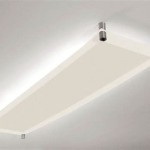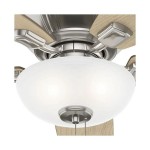Essential Aspects of Bulb Covers for Ceiling Lights
Bulb covers for ceiling lights play a crucial role in both the aesthetics and functionality of your lighting system. They can enhance the appearance of your ceiling fixtures, protect the bulbs from dust and damage, and distribute light more evenly throughout the room. Here are some essential aspects to consider when choosing and installing bulb covers for ceiling lights:
Material and Design
Bulb covers come in a wide range of materials, including glass, plastic, metal, and fabric. Each material offers unique advantages and drawbacks. Glass covers are known for their clarity and durability, but they can be fragile and more expensive than other options. Plastic covers are lightweight, affordable, and resistant to breaking, but they may not provide the same level of clarity as glass. Metal covers are durable and can add an industrial or modern touch to your décor, but they can be heavy and may obstruct the light output. Fabric covers are decorative and can create a soft, diffused light, but they tend to collect dust and may not be suitable for humid environments.
Shape and Size
Bulb covers are available in a variety of shapes and sizes to accommodate different types of ceiling light fixtures. Common shapes include round, square, rectangular, and oval. The size of the bulb cover should be large enough to cover the bulb completely, but not so large that it obstructs the light output. If you are unsure of the correct size to choose, consult with a lighting professional.
Light Distribution
Bulb covers can affect the way light is distributed throughout the room. Clear covers allow light to pass through unobstructed, while frosted or opaque covers diffuse the light, creating a more even distribution. Diffused light is less harsh and can be more flattering in certain applications, such as living rooms and bedrooms. If you want to create a more focused beam of light, choose a clear bulb cover.
Style and Decoration
Bulb covers can also add a decorative touch to your ceiling light fixtures. They come in a variety of styles, from traditional to modern, and can be used to enhance the overall aesthetic of your home décor. Ornate bulb covers can add a touch of elegance to a formal dining room, while simple and modern bulb covers can complement a minimalist living room. Consider the style of your ceiling light fixture and the overall décor of the room when selecting bulb covers.
Installation
Installing bulb covers is typically straightforward. Most bulb covers simply clip onto the bulb, while others may require screws or other fasteners. Follow the manufacturer's instructions carefully to ensure a secure and safe installation. If you are uncomfortable installing bulb covers yourself, consult with a qualified electrician.
Maintenance and Cleaning
Bulb covers can collect dust and dirt over time, which can affect their appearance and light output. Regular cleaning is essential to maintain the optimal performance of your bulb covers. Use a soft, damp cloth to wipe down the covers and remove any dust or debris. Avoid using abrasive cleaners or harsh chemicals, as these can damage the covers.

Clip On Ceiling Light Cover Exposed Shade Ez

How To Install Modern Ceiling Light Cover Conversion Kits

Diy Cover Up Ugly Light Fixtures In Al Housing Hawk Hill

Making A Ceiling Light With Diffuser From Lamp Shade Young House Love

Farmhouse Lighting Hallway Light Lamp Covers Ceiling Fixtures

Ceiling Light Covers You Can Diy Six Clever Ways To Cover Ugly Fixtures

Ceiling Pendant Light Hanging Lamp Lighting Furniture Home Living Fans On Carou

Light Shades Chandelier Ceiling Lamp Shade Wall Covers E14 Bulb Home

Ez Shade Clip On Light Bulb Cover 9 1 Inches White Polycarbonate Uv Resistant Globe Replacement Ceiling Ezshade01 The Home Depot

Evelots Ceiling Clip On Light Bulb Shade Lamp Dome Antique Diamond Cut
Related Posts








